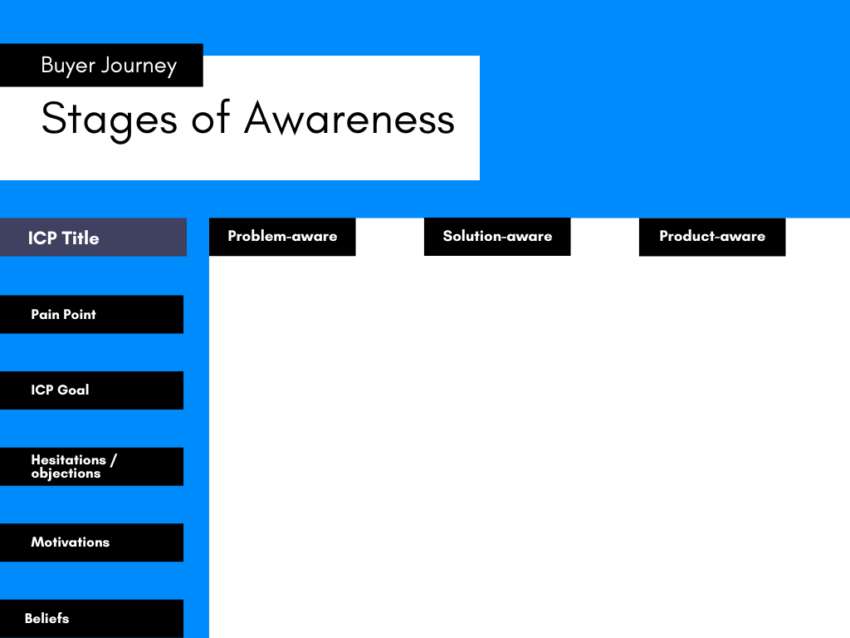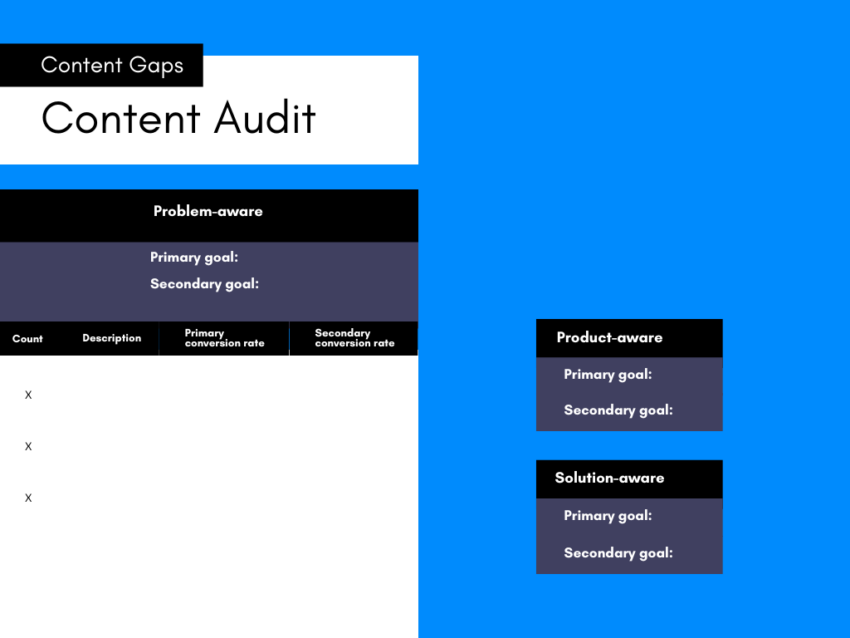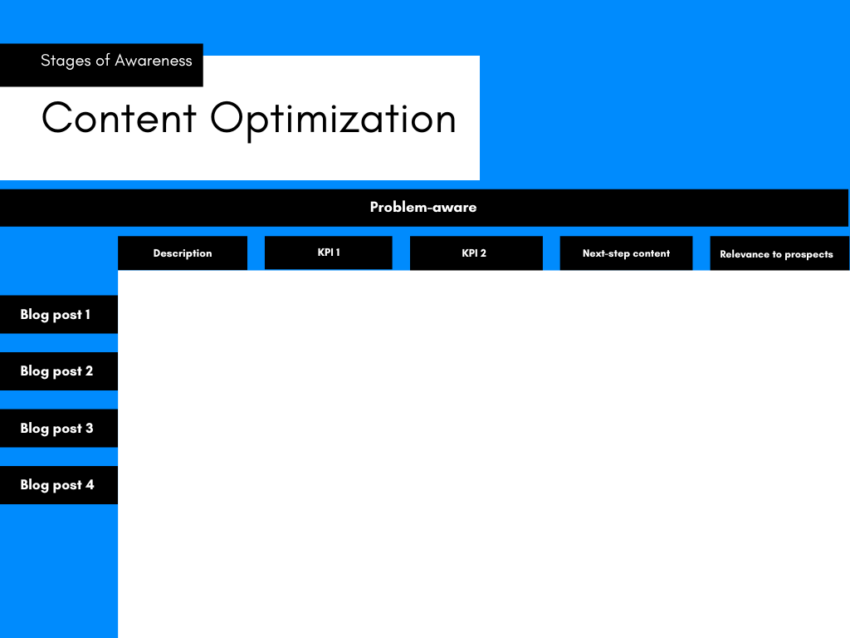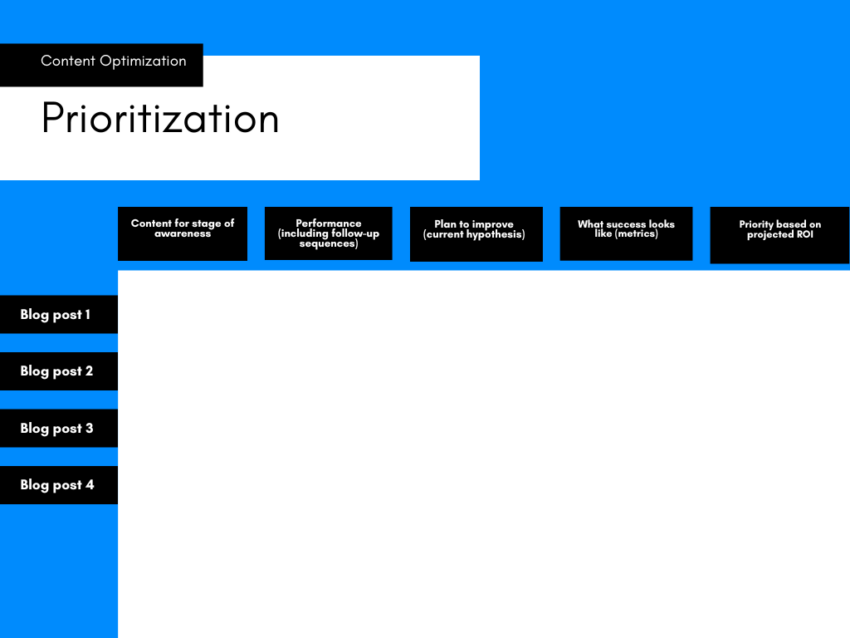Boosting Organic Traffic Conversions: A Startup Guide
Without becoming a media company of one (or lining up dozens of AI prompts)
How to view content through the lens of conversion copywriting? And what it means for your startup’s growth through organic channels?
In this post you’ll uncover three approaches that will help you revamp your content strategy to convert your best prospects into customers.
Getting Traffic Doesn’t Mean Getting Prospects
I’ve had conversations with many prospects and mentees who can’t quite decide what to prioritize: bringing in more organic traffic to fill up their pipeline or optimizing for conversions first. As a conversion copywriter, I feel conversion should be treated as the primary goal.
But the elephant in the room is assuming that all traffic is created equal and as long as enough prospects land on the website, they’ll convert.
Is it a reasonable assumption, though?
What if you end up attracting traffic that doesn’t convert and bounces right off the page? That’s an extreme example, but not too implausible. The missing link is making sure there’s an alignment between “traffic-centered” content and “conversion-focused” copy.
You don’t need to attract everyone. What you need is to target the right prospects that:
- fit your ICP profile
- are looking for a way to solve a problem that your product is trying to solve
- have a budget to invest in solving that problem
Because everything, from content to web copy, is meant to contribute to the ultimate business goal — getting the right-fit customers for you.
Content *Is* Your Conversion Copy
For the purposes of this post, let’s say content is anything created outside of key website pages and is meant to attract traffic and convert it into prospects, and eventually, customers. This includes not only blog posts, but also buyer enablement content hosted on the website – like assessments, guides, or reports.
We often assume that it’s the TOFU content that brings in traffic, but this may not always be the case. Nurturing sequences and educational series can equally contribute to the customer journey.
In many cases, content does not answer the questions customers are asking because it focuses on a totally different set of KPIs.
Questions like “What are our competitors writing about?” and “What are the keywords we need to compete on?” are not the wrong questions. But they shift the focus from “What do our best customers need from us to become our customers?” to keywords and competitors’ content strategy, reducing your field of vision.
To step outside of this narrow segment, consider focusing on your ICP’s journey from prospect to customer – and finding inspiration there. If you have a bigger picture in mind, you can find out almost anything, from favorite online channels to pain points and unanswered questions, and save your sales team weeks of time.
Going Wide, Talking to Prospects Who Don’t Care, and Other Frequently Made Content Mistakes
As conversion copywriters, we should be aware of the different stages of awareness and remember that different audience segments may require completely different approaches.
Here are some of the content-related mistakes that may be affecting your conversion rates, broken down by your audience’s stage of awareness.
Problem-aware content
- Not considering alternative solutions that are outside of direct competition
- Starting with 101 content that brings in low-value prospects
- Focusing only on content to turn unaware prospects into product-aware prospects
- Building a general, keyword-led content funnel and missing opportunities to be the only blog that addresses relevant topics for a specific audience
Solution-aware content
- Not addressing ICP beliefs about the industry (if most of your ICPs believe that the problem you’re solving is actually unsolvable or not a problem at all, there’s not much you can do unless they change their minds)
- Not addressing concerns prospects might have at this stage of awareness (“Is this going to be too hard to do?” oir “Can I just keep doing the same thing, so I don’t have to learn so much new stuff?”)
- Ignoring prospects’ objectives at this stage and their objections or narratives about the industry
- Driving straight to the primary conversion goal without adding product-aware content to the mix
Product-aware content
- Focus exclusively on features (ignoring “What’s in it for me?” for different segments)
- Short, “we are the hero of the story” case studies
- Not having “This is not right for you, if…” content that helps bad-fit prospects self-segment themselves out
- Ignoring enterprise-scale concerns like “Can we really implement it?” or “What if my team doesn’t buy into this product?”
As you can see, in most cases, it’s not only about getting eyeballs on the content, but also about writing persuasive content to help prospects overcome beliefs and objections that are preventing them from converting. This is where you truly have to understand your audience to get this right.
Shifting to Conversion-Focused Content
It’s not about having a lot of content on your website. Rather, it’s about aligning your content strategy with your business conversion goals:
- Focus on the topics of interest for your best customers – based on their stages of awareness
- Create transitions between stages of awareness to drive towards conversions
- Optimize your offers for each piece of content, from “Why should I read it?” to “Why would I give you my email address in exchange for this information?”
To be more specific, it means the following:
- Connecting content to buyer journey for each stage of awareness:
- Connecting content to prospects’ goals and aspirations
- Addressing objections, hesitations, unanswered questions at every stage of the journey
- Aligning micro-conversions with journey steps (TOFU content + “Schedule your demo” will not get as many conversions as TOFU content + something that prospects actually need to solve to move forward)
2. Creating transitions from one stage of awareness to the next:
- Adding nurturing sequences for interactive content
- Creating welcome sequences with self-segmentation for newsletter subscribers
- Mapping out content clusters based on Jobs to be Done, not keywords
- Developing post-webinar drip campaigns, and more
3. Optimizing offers for each piece of content:
- Giving readers reasons to read any piece of content
- Encouraging them to explore additional content
- Incentivizing them to sign up for your newsletter (“Get product updates and new posts” just isn’t that compelling)
- Answering “What’s in it for me?” question to encourage lead magnet downloads or self-assessment completion
A quick note for bootstrapped startups and marketing departments of one just: you don’t need a multi-post, well-thought-out, amazingly planned strategy to see results (although it wouldn’t hurt). To get started, you need the right content.
Investing time and effort into one long-form post that would serve as a sales page in disguise can be more effective than 5 shorter, informational posts.
In one of my projects, this is exactly what we did, getting a 16% increase in free trial signups in the first 3 months after publishing this blog post. You can read about it here.
The key to unlocking those conversion numbers was not in adding more informational content, it was in structuring the narrative to follow the stages of awareness, and addressing the (previously hidden) beliefs about the industry and the product.
None of that would have been possible without conducting customer research, mapping out the stages of awareness, and running a content audit to identify opportunities for conversion rate increases.
Optimizing Existing Content to Drive Conversions
If you already have a vast library of content pieces, you can optimize them to help you get better-fit traffic and more prospects, and continue filling content gaps if most of your content was focused on just one stage of awareness.
Here are the steps to achieve this goal, from the initial info to content optimization goals:
- Map out buyer journey
- Audit content for gaps
- Find content optimization opportunities
- Prioritize content
- Execute
The key step here is connecting prospects’ needs at each stage of their journey to content. Not all of that has to be educational – in some cases, you have to address the beliefs and objections that stop prospects from moving forward.
For such cases, quizzes, self-evaluations, or other self-segmentation types of interactive content can help you move prospects forward and reduce the number of unqualified leads on your call.
Ultimately, decisions around which new pieces of content to prioritize and which to optimize depends on your audience, business goals, and GTM strategy. The starting point, however, is the same: understanding your buyers.
Mapping Out Buyer Journey
The matrix doesn’t include unaware (why would you write content for the folks that don’t realize they have a problem?) and most-aware (in this case, buyer enablement content and signup pages are more relevant).
Your focus should be on determining which topics are relevant for each stage of awareness and how they can help you achieve your business goals, moving prospects from one stage to the next.

Auditing Content for Gaps
The next step is to bridge the gaps between your different content segments and eliminate the obstacles.
For example, if you have been relying on TOFU content to bring in traffic, but there’s no next obvious step that’s aligned with prospects’ needs, you will have a hard time converting that traffic into trials or demos.
This table also forces you to determine what your conversion goals are – for each stage of awareness and for each piece of content (they may not be the same).
If you only fill out the count columns, it’ll be a quick way to determine if there’s an obvious gap that makes it difficult for prospects to see a reason to convert. To dig in deeper, also add descriptions and primary & secondary CTAs and conversion rates.

Finding Content Optimization Opportunities
Content gap audit can help you understand what to prioritize in terms of creating new content. But what about existing content pieces?
This is when we’re digging in to focus on content optimization across stages of awareness.
An important column in this case is whether or not a particular piece of content has a follow-up email sequence or the next-step content that readers are meant to consume.
An excellent example is a gated content + nurturing sequence combo; could also be an assessment + assessment results or a nurture sequence for educational content.
The final column is for evaluating content relevance to this particular stage of the buyers’ journey – that’ll help you prioritize your content optimization efforts and create an optimization plan.

Prioritizing Content and Executing
At this point, you have achieved the following:
- You understand your best ICPs’ buyer journey and their needs across stages of awareness
- You have identified content gaps and possible reasons for low conversion rates across different stages of awareness
- You know which blog posts across stages of awareness are the most relevant and how they fit your own business goals
- You have specific conversion goals for each piece of content and for each stage of awareness
- You have started creating plans for additional pieces of content to bridge those gaps
But, as always, there’ll be too little time and too much content to produce. Where should you invest your time and effort?
This is the tip I’ve learned at Spryng during an awesome workshop run by Ben Labay and Tatiana Morozova. As a rule of thumb:
- The fewer touchpoints there are to get to the ultimate conversion goal, the higher the priority
- The higher the probability of improving sales KPIs thanks to content, the higher the priority
- The higher the relevance to your best ICPs, the higher the priority (Why write how-to articles, if you don’t want to attract the DIY crowd that *may* be ready to convert in 3-5 years?)

As more startups need to use their resources wisely, investing time and effort into a more strategic approach to content will help startups avoid wasting resources on content that generates bad-fit traffic or results in bounces, and make sure that the content they produce contributes to growth.
Don’t forget! Discover the top GTM strategies from B2B experts at RevCon: our must-attend annual conference on October 18-19, 2023!